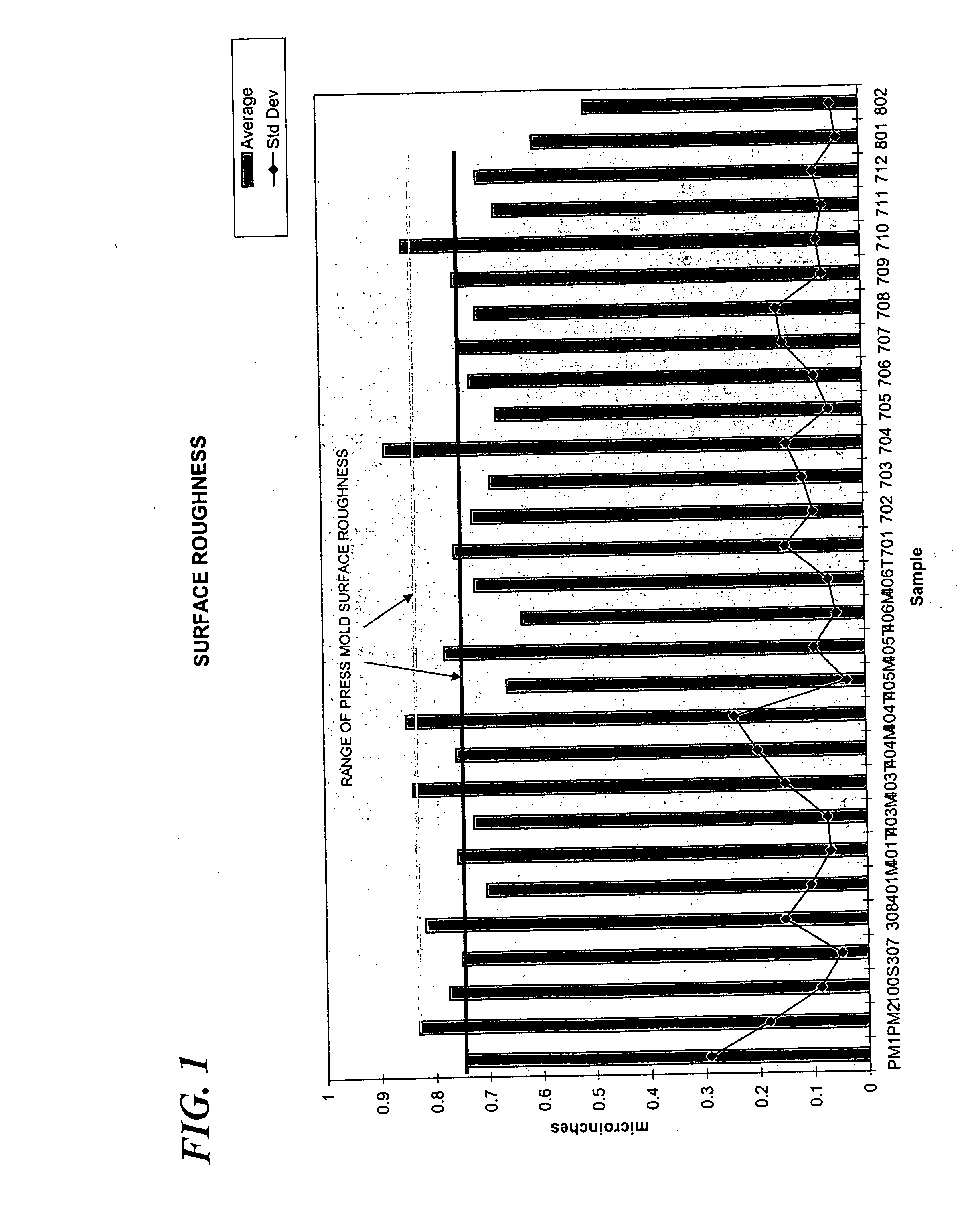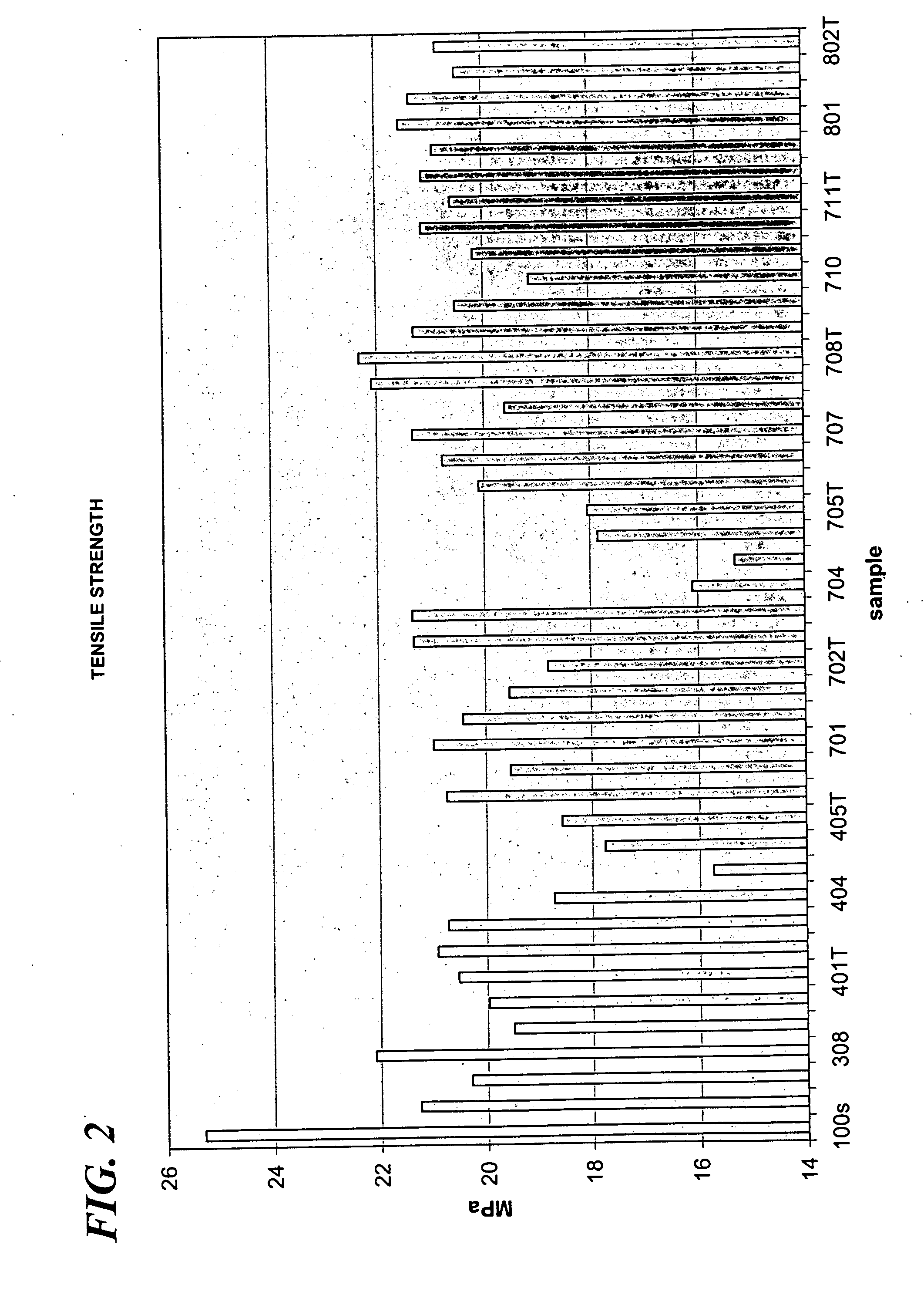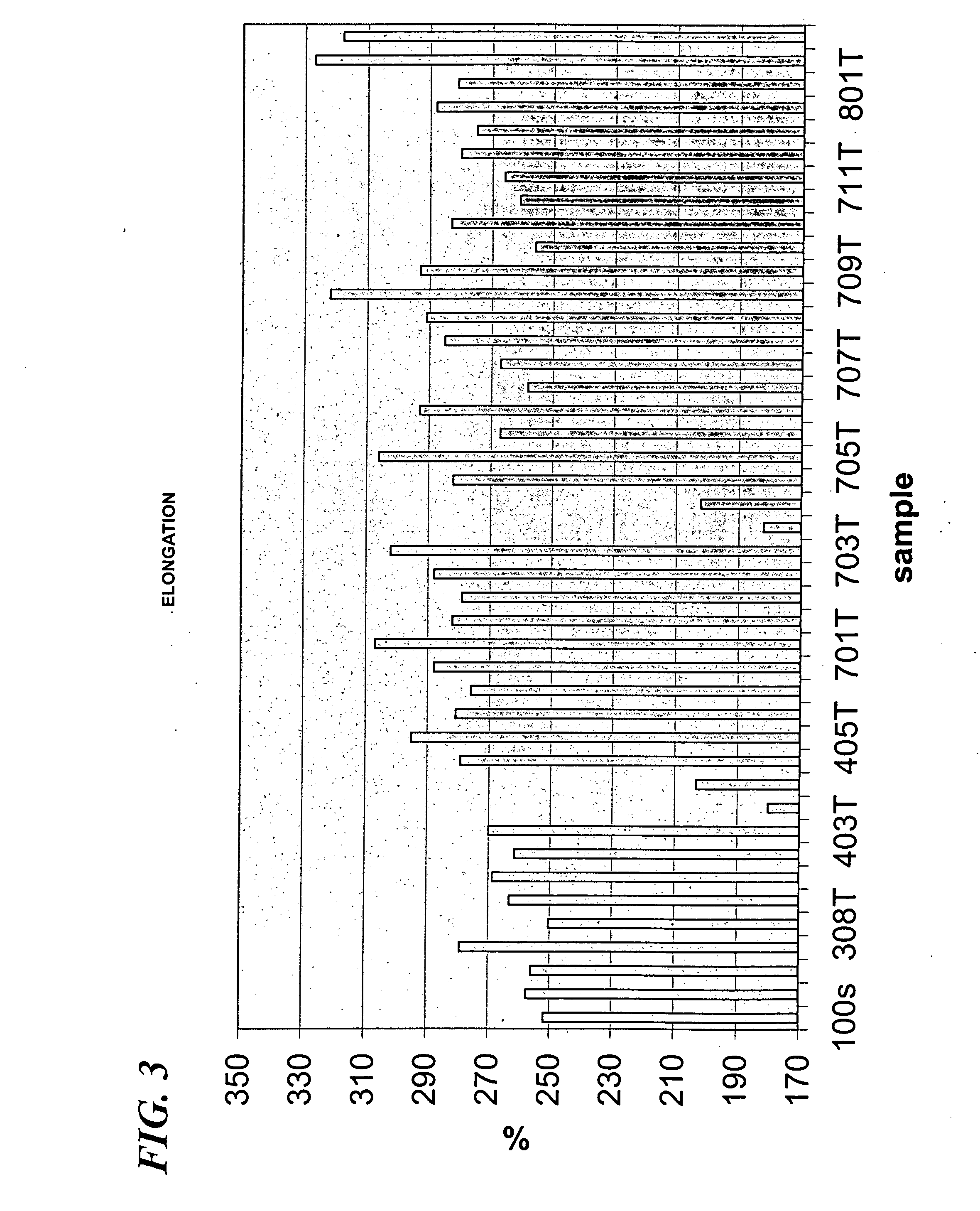Polyetrafluoroethylene micropowder compositions
- Summary
- Abstract
- Description
- Claims
- Application Information
AI Technical Summary
Benefits of technology
Problems solved by technology
Method used
Image
Examples
examples
[0076] Molecular Weight Determination:
[0077] Using the AGC method, molecular weight is calculated using the formula [1.86667×1011{AHc(cal / gm)−5.16}] where ΔHc is the heat of crystallization measured by differential scanning calorimetry. Typical conditions for a Molecular Weight Determination include using a calibrated DSC (Differential Scanning Calorimeter) with a good baseline; Measure out sample of 10 mg + / −0.25 mg. Heat the polymer (PTFE) up to 350° C. at 10° C. / minute. Hold at 350° C. until DSC equilibrates (approx. 1 minute). Cool sample to 250° C. at 10° C. / minute. Heating curve temperature capture is 265 to 350° C. range. Cooling curve temperature capture is 260 to 330° C. range. Then using the AGC calculation to determine number average molecular weight. The number average molecular weights for the various PTFE materials used in the following examples are provided in Table 1 below.
TABLE 1Molecular weights of various PTFE gradesHcCalculatedTemperatureΔ HcNumber AverageDesc...
PUM
| Property | Measurement | Unit |
|---|---|---|
| Temperature | aaaaa | aaaaa |
| Temperature | aaaaa | aaaaa |
| Volume | aaaaa | aaaaa |
Abstract
Description
Claims
Application Information
 Login to View More
Login to View More - R&D Engineer
- R&D Manager
- IP Professional
- Industry Leading Data Capabilities
- Powerful AI technology
- Patent DNA Extraction
Browse by: Latest US Patents, China's latest patents, Technical Efficacy Thesaurus, Application Domain, Technology Topic, Popular Technical Reports.
© 2024 PatSnap. All rights reserved.Legal|Privacy policy|Modern Slavery Act Transparency Statement|Sitemap|About US| Contact US: help@patsnap.com










